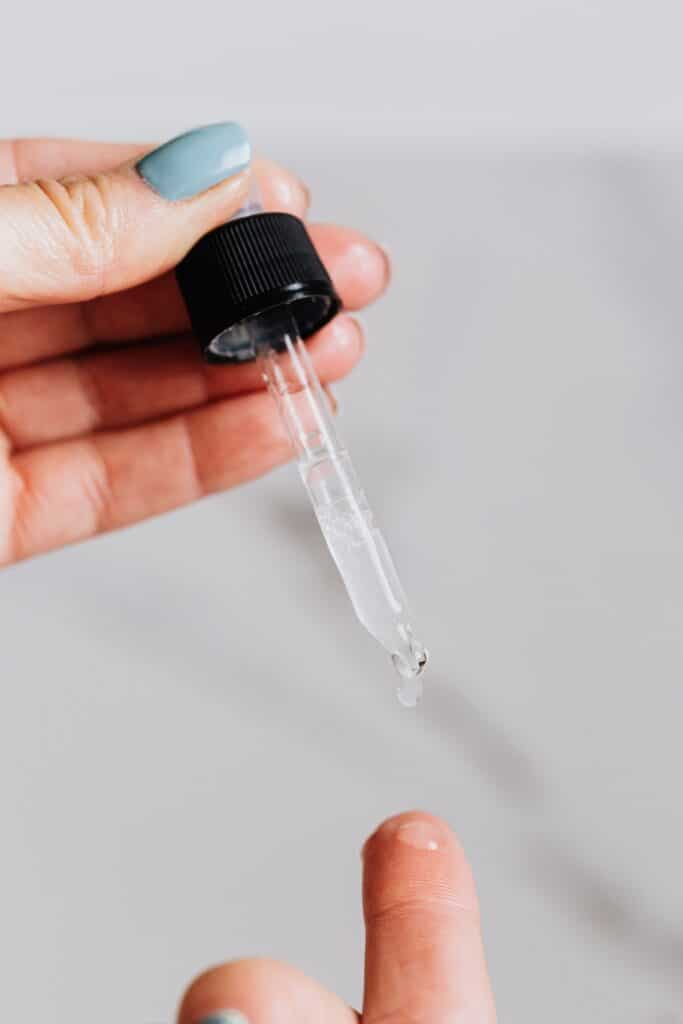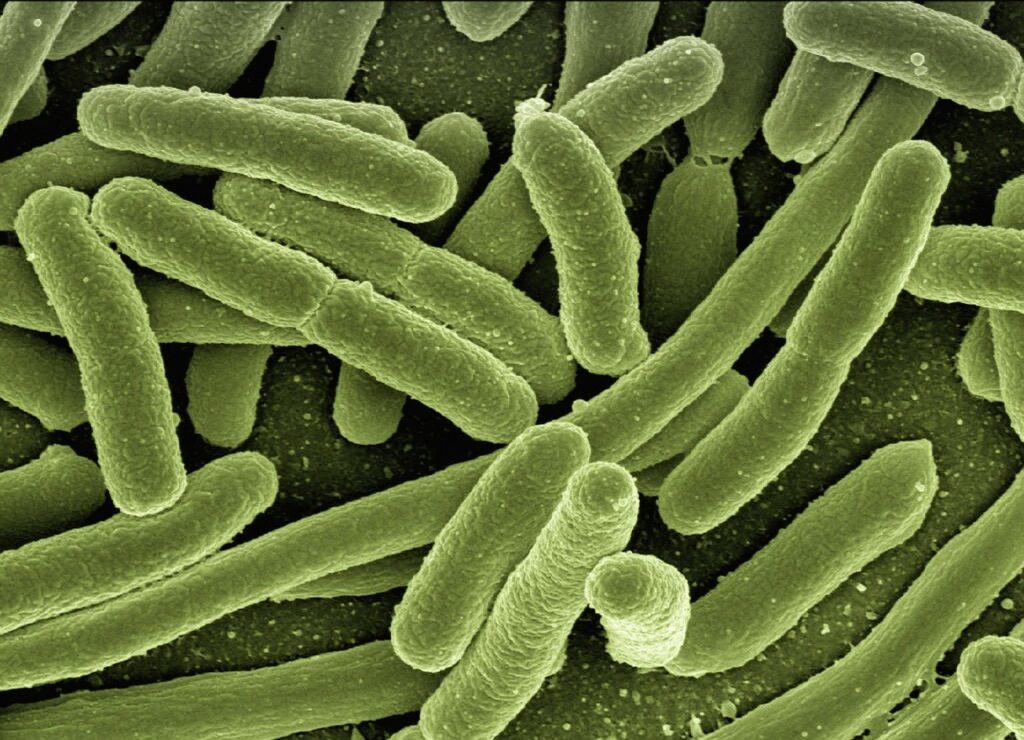Hyaluronic acid, a biopolymer gaining widespread attention in beauty products. It is a skincare staple and is even making its way into makeup products. There are so many different types being marketed, vegan hyaluronic acid, marine hyaluronic acid, natural hyaluronic acid; the list goes on and on. And in this saturated market, understanding the sources of hyaluronic acid, both biological and synthetic, is crucial for making informed consumer choices. Let’s delve into the science behind hyaluronic acid and explore its sources to empower you as a savvy skincare enthusiast.

Understanding the Body’s Production of Hyaluronic Acid
Within our bodies, various cells contribute to the production of hyaluronic acid. Fibroblasts, responsible for collagen production, work alongside keratinocytes, mesenchymal stem cells, and synoviocytes to continuously generate hyaluronic acid in the skin.
Related Post: What is Hyaluronic Acid?
Lasting only about two days, high molecular weight hyaluronic acid plays a vital role in maintaining joint health and tissue water balance.
In response to injuries, cells produce lower molecular weight hyaluronic acid to signal distress to other cells, highlighting its dynamic role in our overall well-being.
Navigating the Landscape of Hyaluronic Acid Sources for Beauty Products
When it comes to beauty products, hyaluronic acid can be sourced from three main places: animal tissue, plants, and bacteria. Each has its unique challenges, influencing factors like product uniformity, contamination, and cost.
Animal Tissue Extraction: A Traditional Yet Complex Source
Traditionally, hyaluronic acid has been extracted from animal tissue, particularly rooster combs.

However, this method poses challenges, including potential damage and fragmentation of hyaluronic acid during the extraction process. The use of harsh chemicals and physical grinding can lead to lower molecular weight of hyaluronic acid, causing inflammation in skincare applications.
Related Post: The Types of Hyaluronic Acid: Is Sodium Hyaluronate Different than Hyaluronic Acid?
Contamination is another concern, as incomplete removal of other proteins can trigger unwanted immune responses. Despite being a prevalent source, the drawbacks of animal tissue extraction, such as cost and limited purity, make it less desirable for brands that need high volumes of consistent and pure hyaluronic acid.
Microbial Fermentation: Harnessing Bacteria for Hyaluronic Acid
In the 1990s, scientists discovered hyaluronic acid-producing enzymes in streptococcus (yeah like as in Strep throat!) bacteria, opening the door to microbial fermentation as an alternative source.

This method involves growing bacteria in fermentation tanks, isolating, and then purifying hyaluronic acid. While microbial fermentation addresses some issues, such as uniformity and contamination, it introduces its own set of challenges.
The production of lower molecular weight hyaluronic acid, limited volume, and toxins produced during fermentation are concerns associated with microbial fermentation.
The molecular weight limitations arise from maintaining optimal conditions for bacteria in the fermentation tanks, impacting the acid’s viscosity. Toxins, though eliminated during purification, present potential risks if not handled carefully.
When you see a product that claims vegan hyaluronic acid, this is most likely the manufacturing process.
Plant Sources for Hyaluronic Acid
While animal tissue and microbial fermentation remain the primary sources of hyaluronic acid in beauty products, the quest for innovative, sustainable alternatives is gaining momentum.
As of now, there is no established plant-based source of hyaluronic acid. However, exciting strides are being made in the realm of scientific exploration.
Researchers are actively investigating the possibility of deriving hyaluronic acid from plant-based sources, presenting a promising avenue for future skincare formulations. However, today there are not any plants with enough hyaluronic acid to be a sustainable plant-based source of hyaluronic acid.
The Road Ahead: Innovations in Sources of Hyaluronic Acid
As of now, animal tissue and microbial fermentation stand as the primary sources of hyaluronic acid for beauty products. Notably, there is no established plant-based source, leaving room for scientific innovation. Biomedical scientists are actively exploring new organisms without the toxin risks associated with current bacteria. Techniques involving the isolation of enzymes responsible for hyaluronic acid synthesis show promise for producing the biopolymer without the presence of cells or organisms.
In conclusion, understanding the sources of hyaluronic acid empowers you as a consumer to make informed skincare choices. As scientific innovations progress, we may witness advancements in sourcing practices, leading to more sustainable and refined hyaluronic acid products.
For a deeper dive into the world of hyaluronic acid, explore the other articles in my series.
Complete Series on Hyaluronic Acid
- What Does Hyaluronic Acid Do: A Complete Guide
- What is Hyaluronic Acid?
- The Types of Hyaluronic Acid: Is Sodium Hyaluronate Different than Hyaluronic Acid?
- When To Apply Hyaluronic Acid, Explained
- Hyaluronic Acid Fillers, What You Need to Know
Ready to delve deeper? Subscribe to our newsletter for exclusive insights, expert tips, and science-backed information on deciphering skincare mysteries. Stay ahead of the curve with our regular updates, ensuring you make confident and informed choices for your skincare journey.
👉 Subscribe to our newsletter and join the growing community
But wait, there’s more! Elevate your skincare game by downloading our FREE Skincare Routine Builder Guide. Craft a personalized routine tailored to your unique needs, backed by science and expertise. Say goodbye to confusion and hello to a radiant, confident you!
👉Click here to download your Free Skincare Routine Builder Guide now!
Join our community of skincare enthusiasts committed to making informed choices and achieving skincare goals. Subscribe now and download your guide – because your skin deserves the very best!

1 Comment